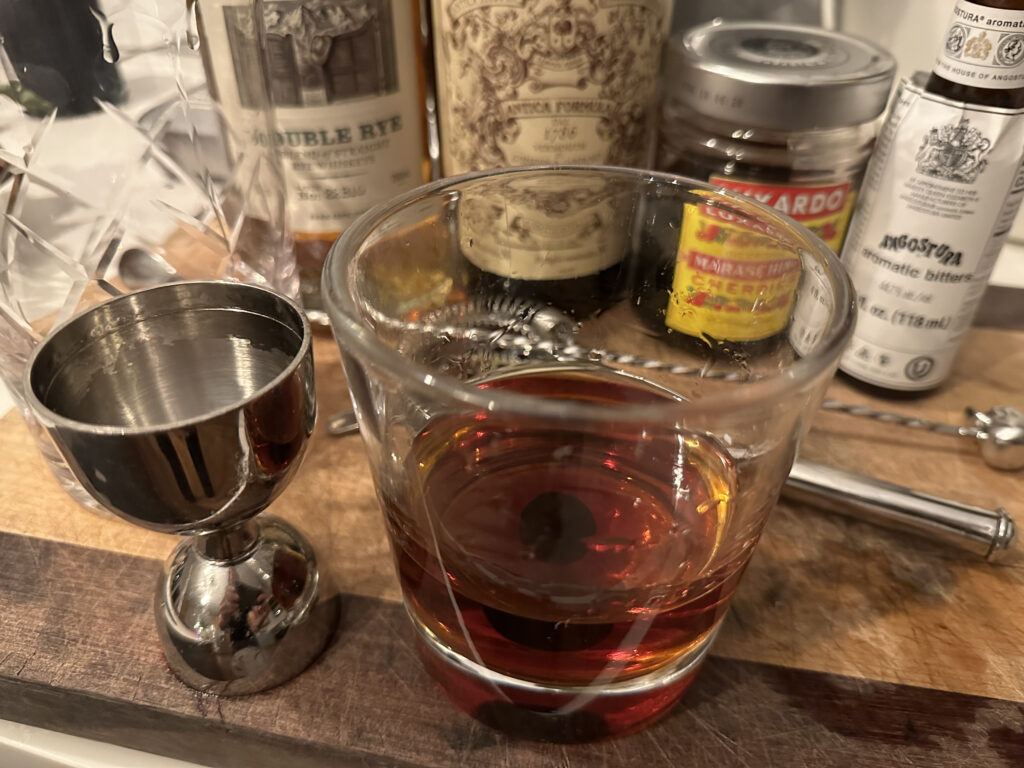A friend of mine recently sent me a link to a set of vintage cocktail books. I wanted to trace the history of the Manhattan because it is easily my favorite drink.
Wikipedia suggests the drink may have been invented as early as 1860. However, there's no mention of the Manhattan in early cocktail manuals like 1864's "The Bartender's Guide", 1867 The American Barkeeper, 1876's Bar-tender's Guide or How to Mix Drinks or either the 1878 or 1881 edition of American & Other Drinks.
There's no mention of it in 1884's "The Complete Bartender: The Art of Mixing." In fact, many of the drinks in the book look downright terrible but the frontispiece is fantastic:
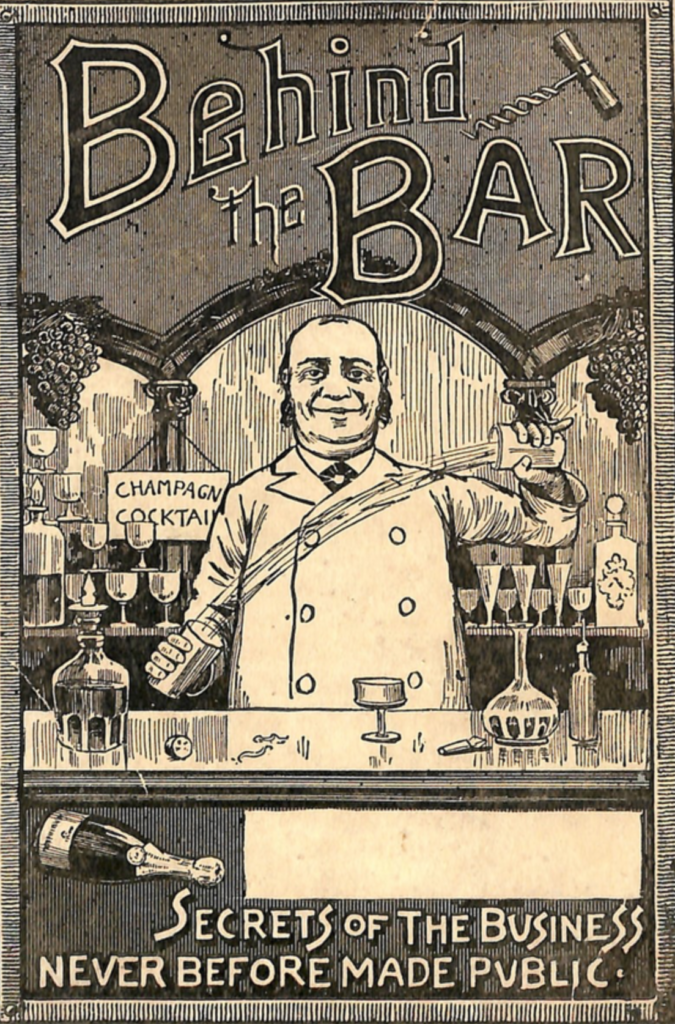
However, 1884 is the first mention of the Manhattan that I can find. It comes in on page 21 of "The Modern Bartender's Guide" by O. H. Byron. Note that there are two recipes; one for sweet and one for dry vermouth (this will continue for a few decades):
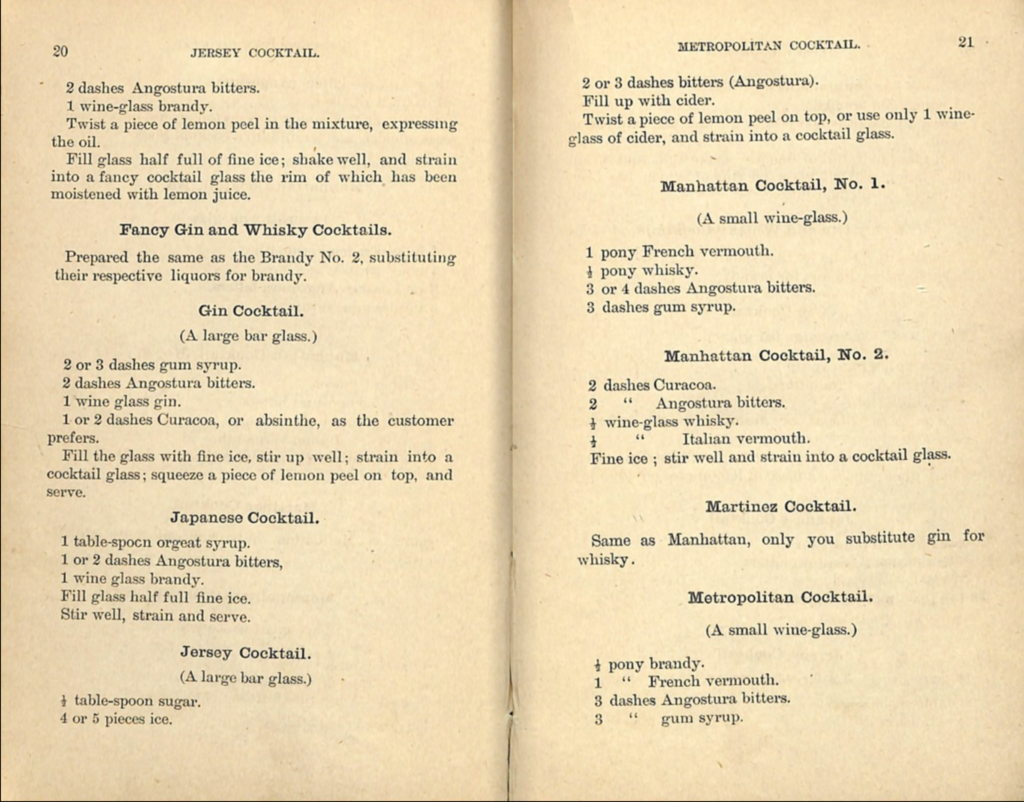
There's a further recipe a few years laterin 1888's "Harry Johnson's New and Improved Bartender's Manual". Here it is on page 40 with the comment "This drink is very popular at the present day." Note as well that the recipe wasn't in the 1882 version.
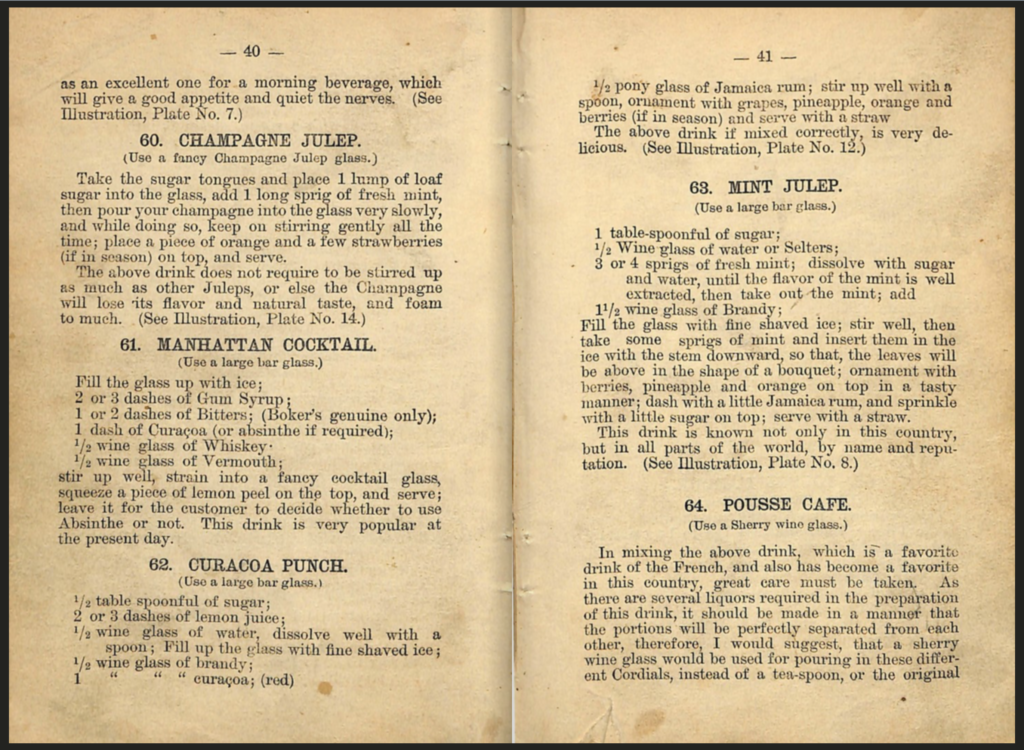
Not only was Harry an author and a bartender, he also had an incredible mustache:
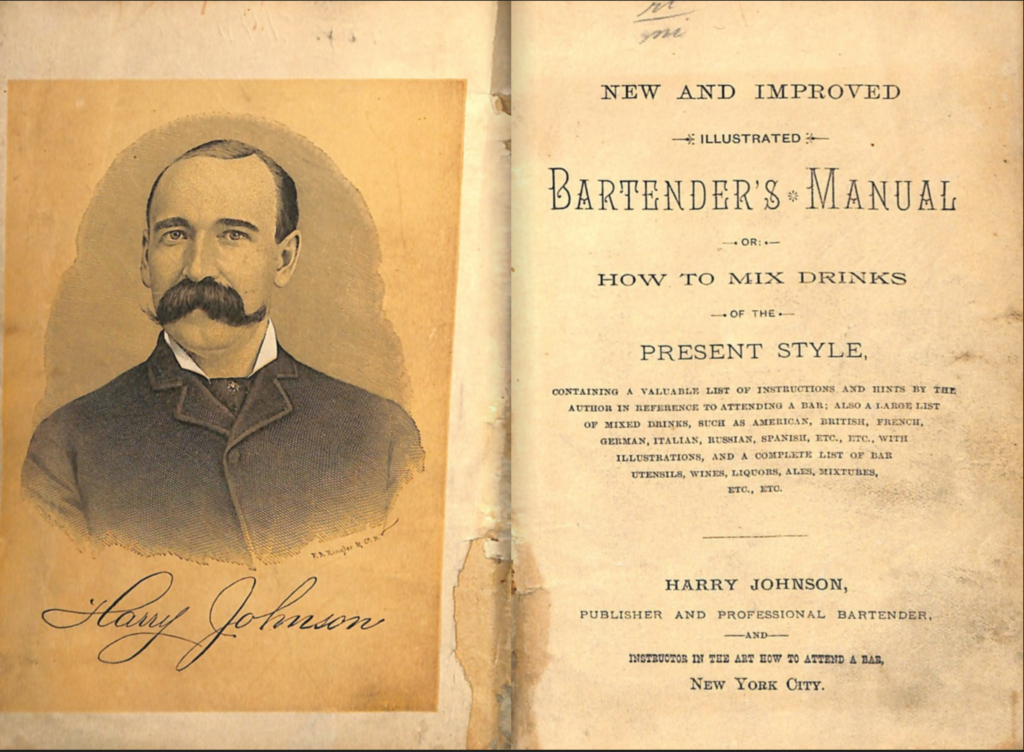
1888 also saw the publication of The Bartender's Manual which contains one of the least usable drink instructions of all time when it comes to making a Manhattan:

For reference, here are the instructions for a whisky cocktail:
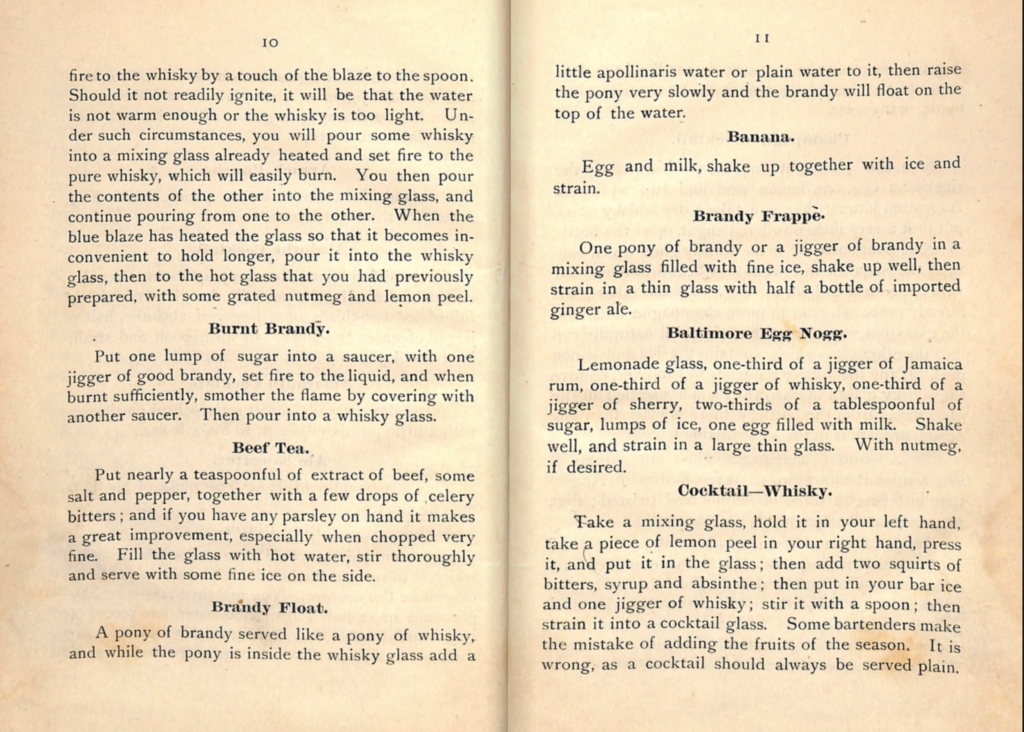
The only real difference with Harry's is that Theodore is using a squirt of lemon essence.
1888 also has the first drawing of a Manhattan in "The Police Gazette's Bartenders Guide" by Richard K. Fox:
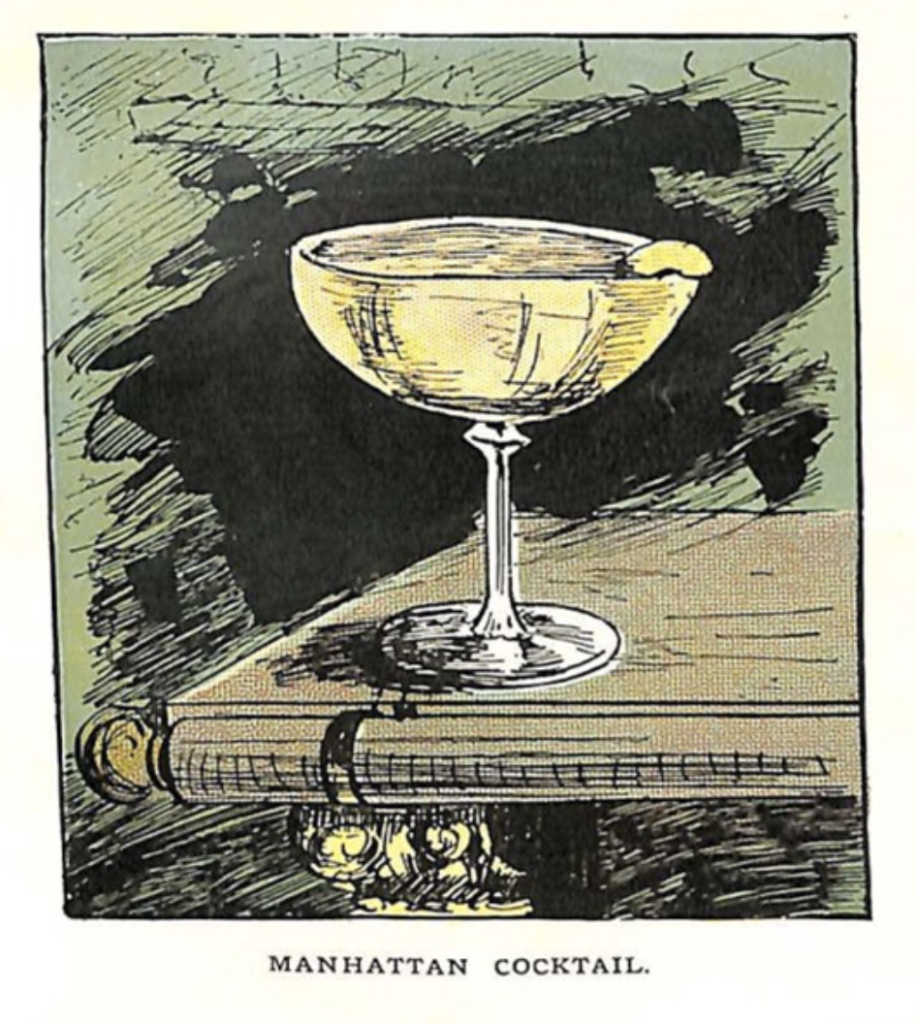
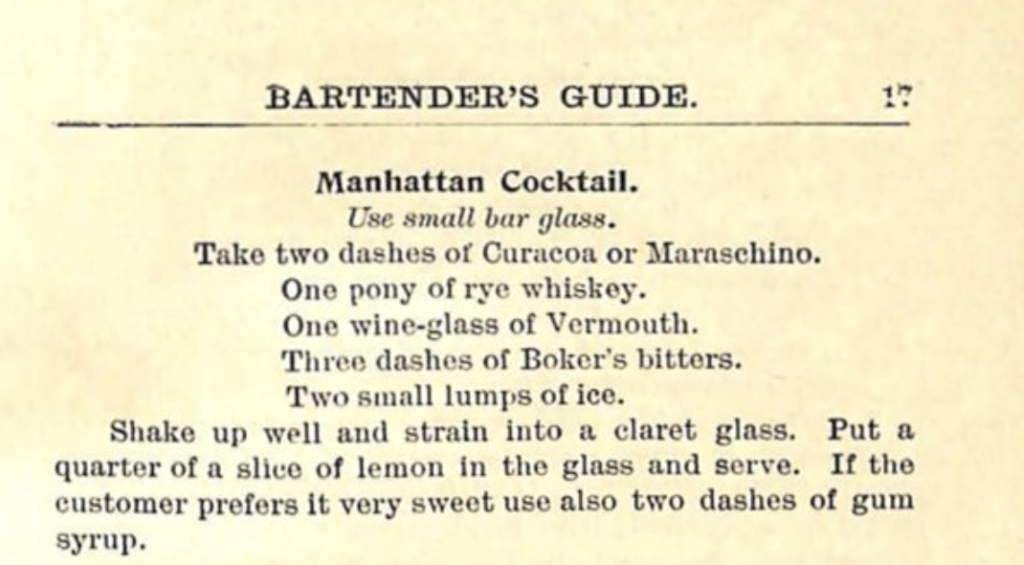
This would be quite a strange drink: a "pony" is 1 oz. and a "wine-glass" could easily be 5 oz (source). And why does this drink need to be shaken?
1895 saw the publication of "The Mixologist" by CF Lawlor. Over 7 years, cherry had been introduced into the cocktail:
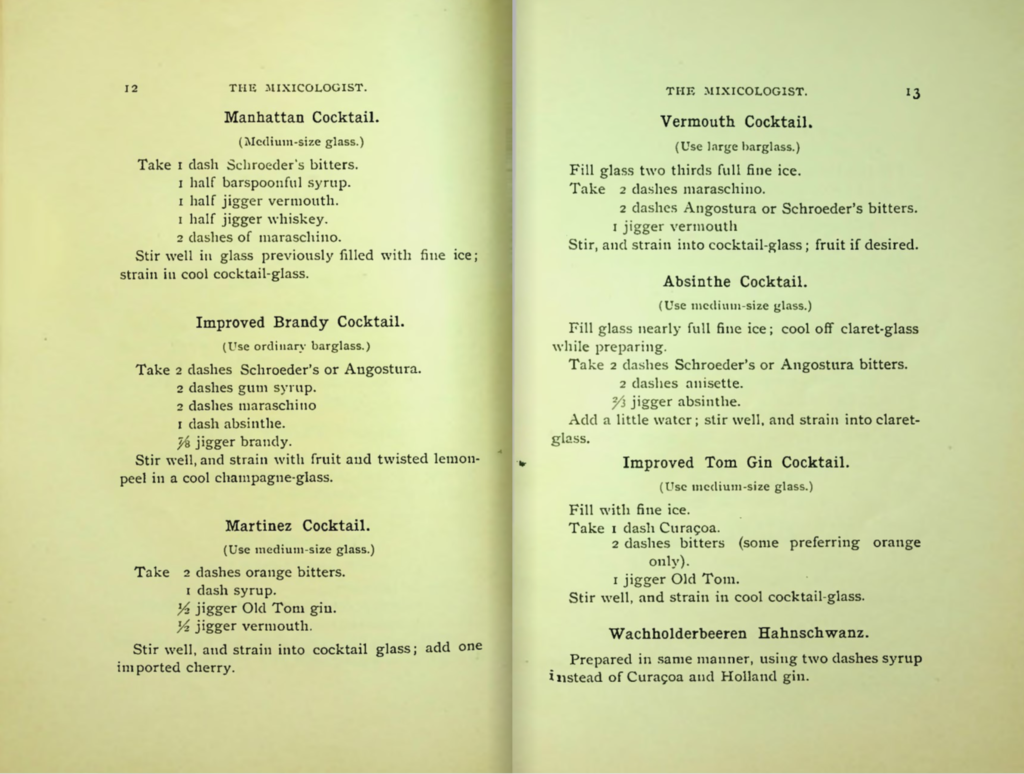
The introduction to the manual also perfectly captures the spirit of the age:
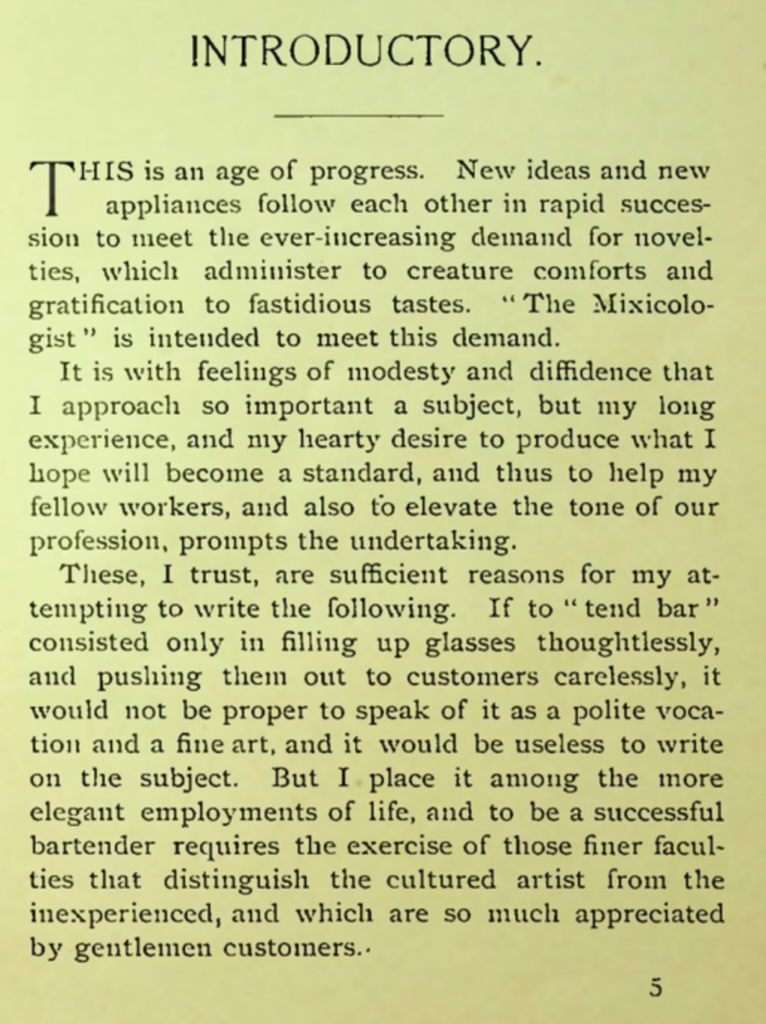
In 1896, the Manhattan has crossed the ocean to Britain and appears in "Drinks of all Kinds for all Seasons" by Frederick and Seymour Davies. Note the incredible amounts of simple syrup and the first mention of Angostura bitters. Also, the first garnish: lemon:
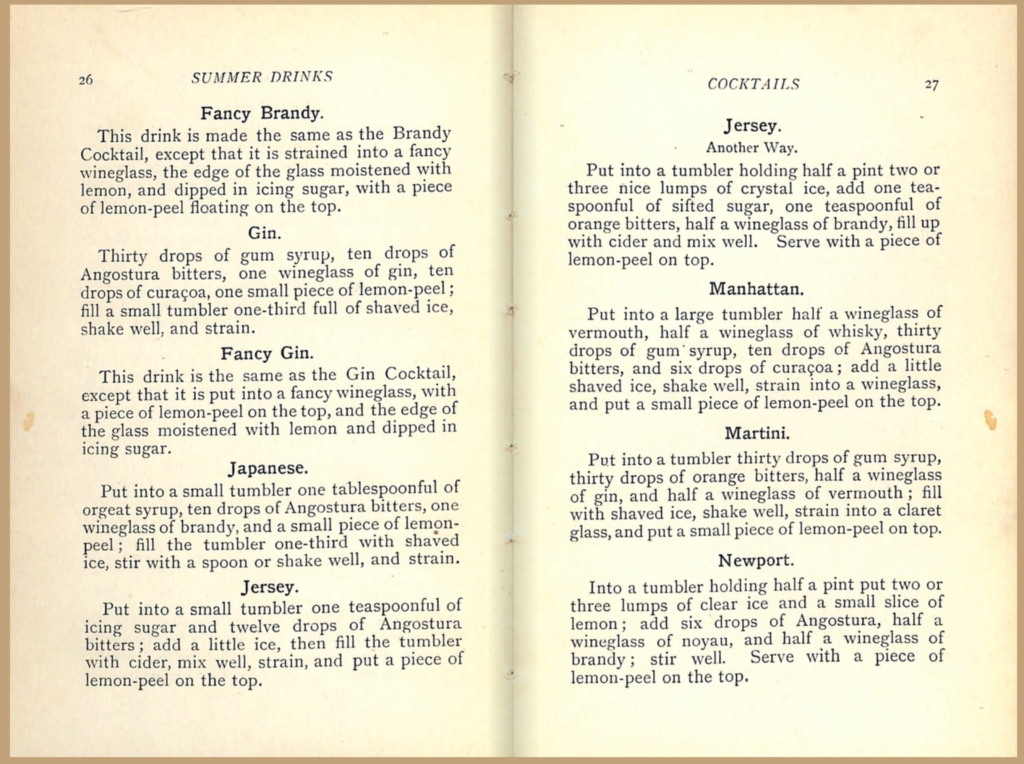
The 1900 edition of "Harry Johnson's" has an updated recipe (fun fact: no updated drawing of Harry; still has the epic mustache). Now there's some lemon and the option of sweet or dry vermouth. Still very popular at present day.
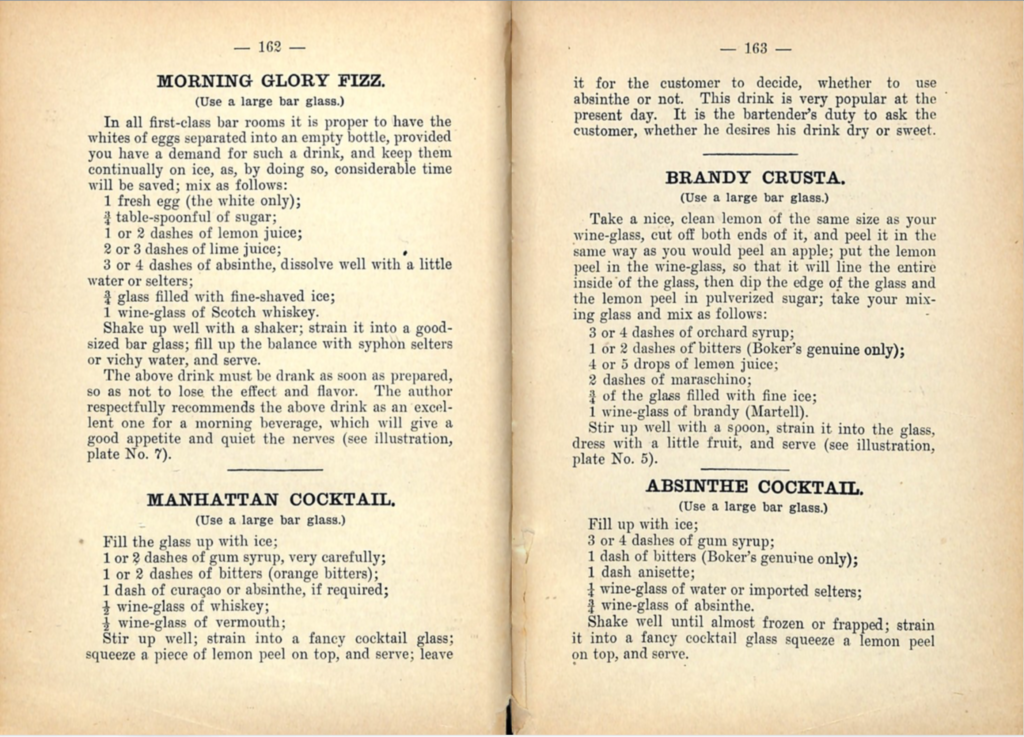
1902's "Recipes of American and other Iced Drinks" by Charlie Paul has a bizarre definition of the Manhattan. Less bitters than 1896's version but Scotch as the base (perhaps because the book was published in England?):
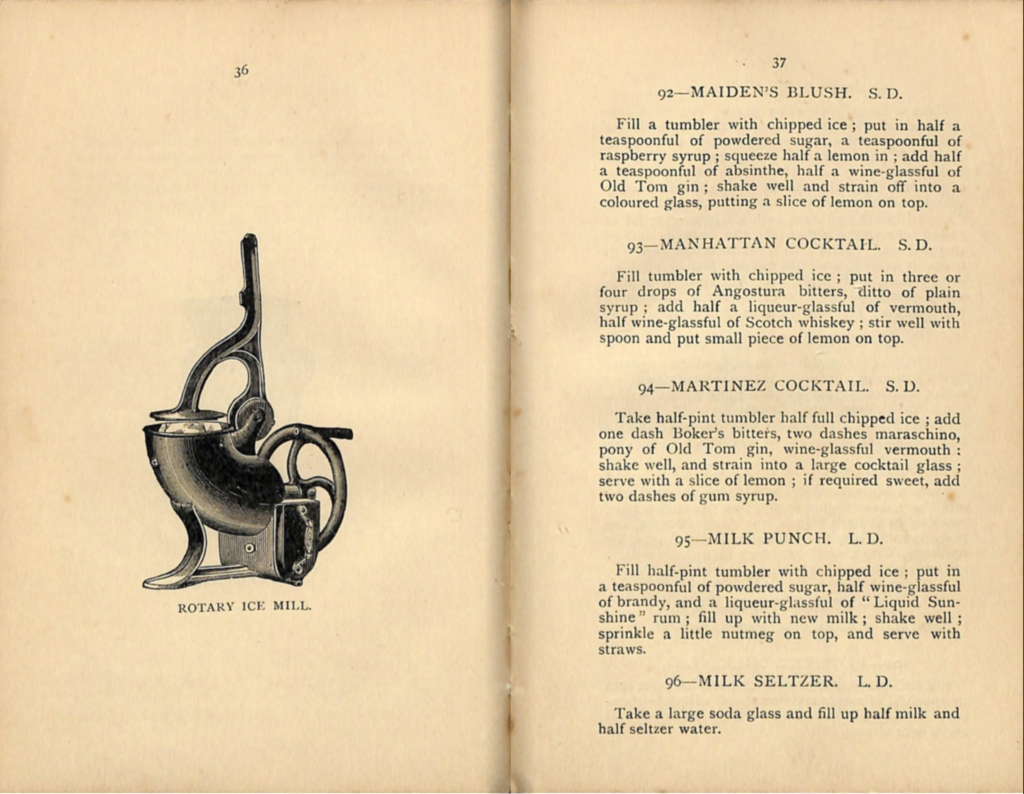
1903's "The Complete Buffet Guide or How to mix all Kinds of Drinks" by V.B. Lewis builds off of Harry Johnson's latest and offers two takes on the Manhattan, alternating sweet (Italian) vs. dry (French) vermouth:
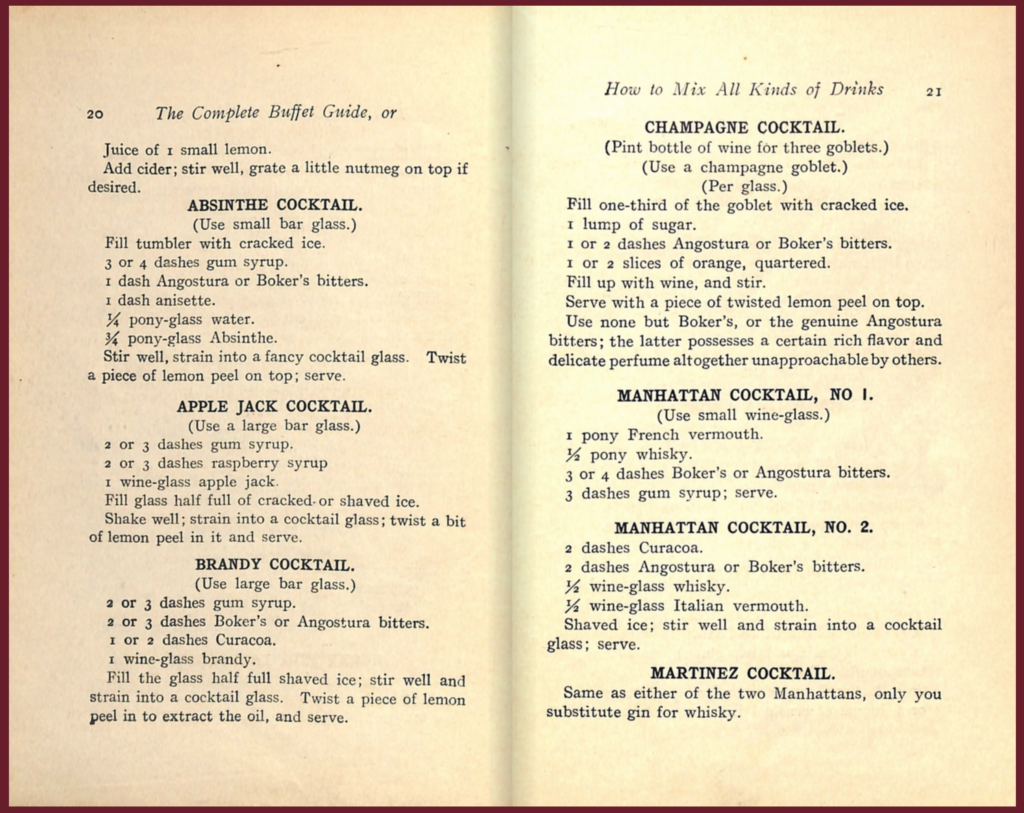
By 1910 - and the Jack's Manual by the eponymous J. A. Grohusko - the Manhattan is exclusively a drink made with sweet vermouth. This is also the first time the type of whisky is mentioned - rye:
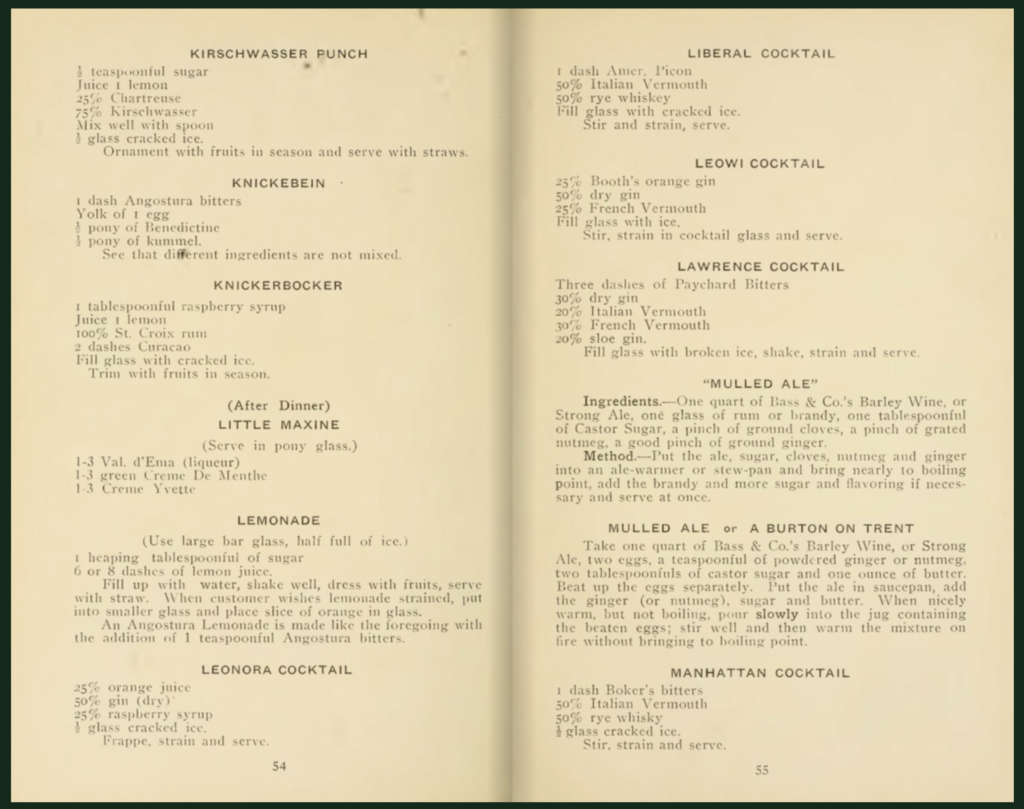
But dry vermouth still rears its ugly head seven years later in 1917's "Seventy Recipes for Cocktails, Cups and Punches" where the Manhattan is known as the "Dry Manhattan Cocktail" (and I checked the index; there was no 'wet' version):
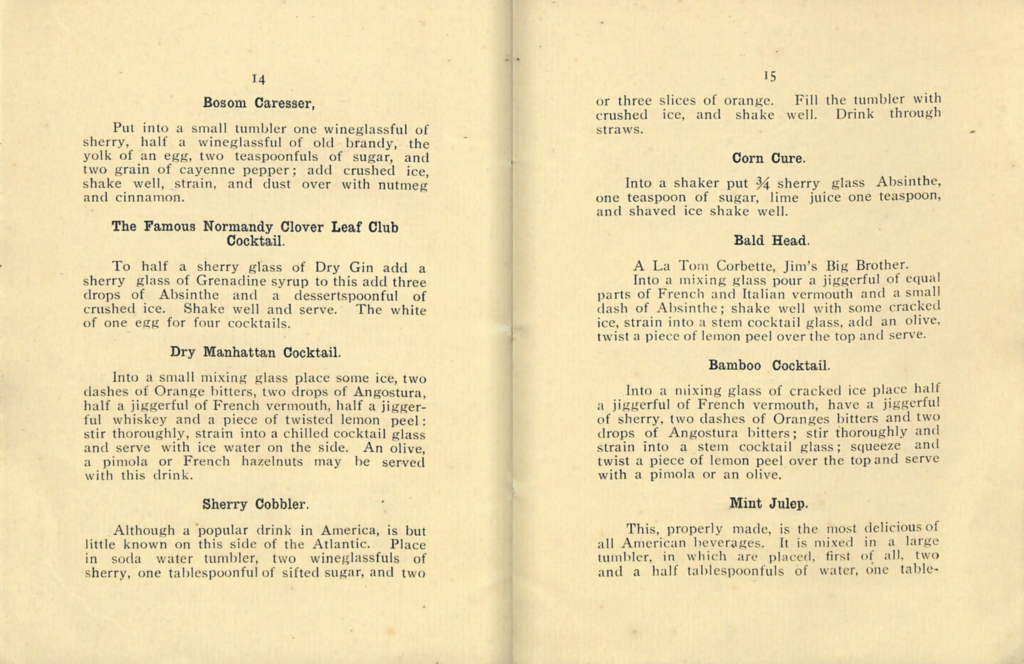
The Parisian version of the Manhattan appears in 1929's "Cocktails de Paris". The ratio of whisky to vermouth is looking more reasonable; note the Cointreau.
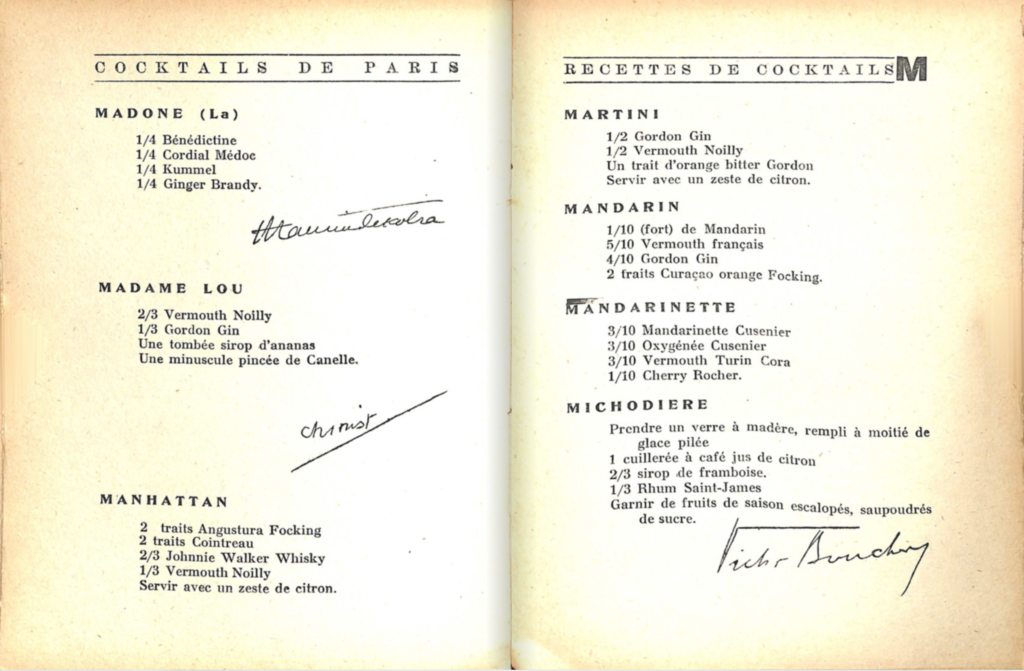
The "Savoy Cocktail Book" from 1930 offers up two version of the Manhattan, offering gum syrup for a sweetened version. Interestingly, the second version of cocktail is much more like the one that survives today.
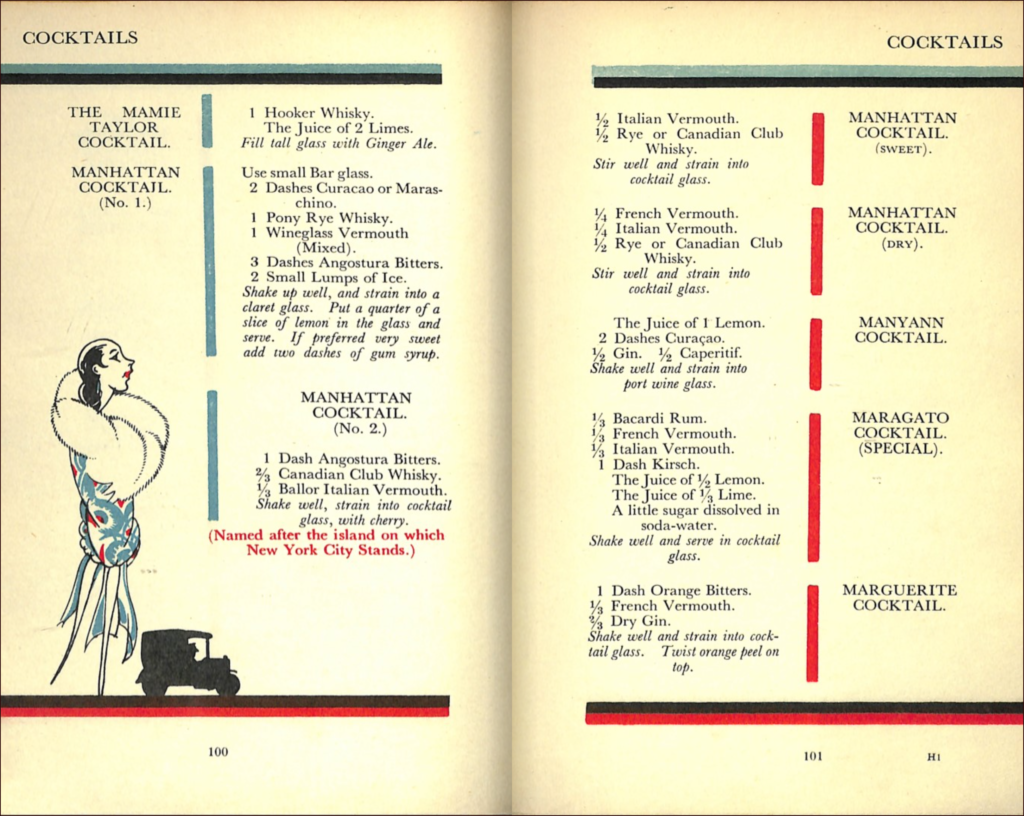
It's worth flipping through the book in its entirety. The design is absolutely beautiful (unfortunately original color copies are prohibitively expensive). Here's a sample of what you'll see:
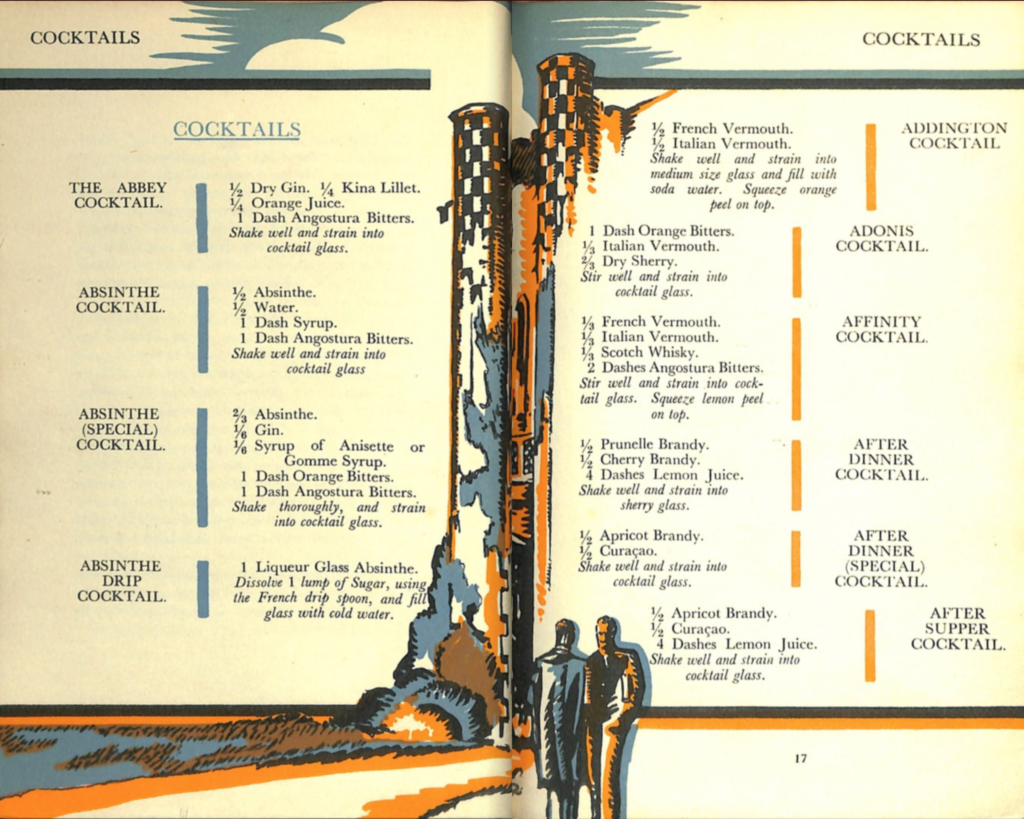
The 1933 Jack's Manual has switched to Angostura bitters, likely as Bokers closed during Prohibition:
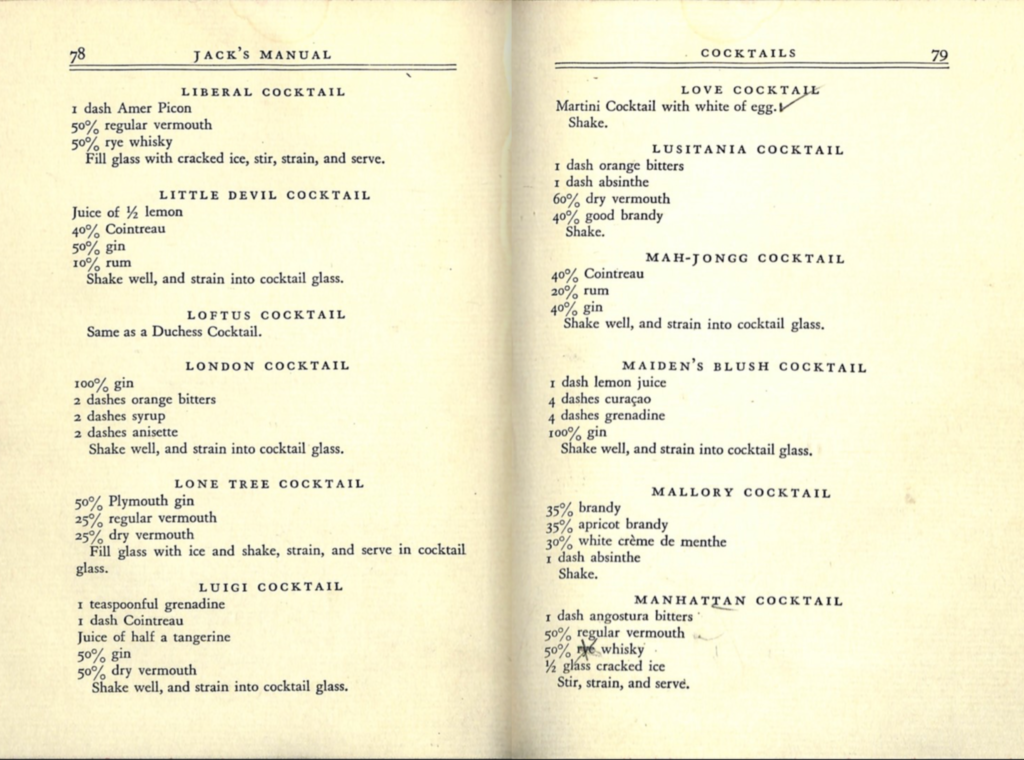
1937's "Liquid Gems" by John R. Iverson has more whisky than sweet vermouth - but suggests bourbon instead of rye. And this is the first mention of a cherry decoration.
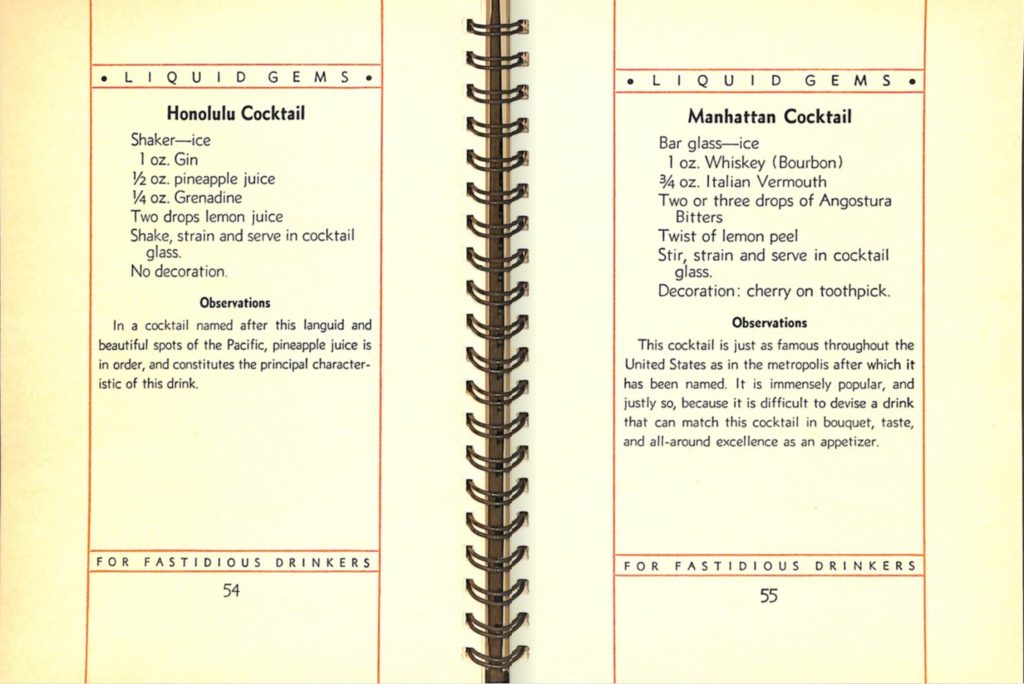
By 1946 and "The Roving Bartender" by Bill Kelly, the Manhattan has an extremely fancy garnish: both lemon and a cherry. Also agnostic to rye or bourbon:

The Manhattan Recipe in 1954's "Practical Bar Management" by Eddie Clarke (a legend from the Savoy) looks almost identical to what you'd get today:
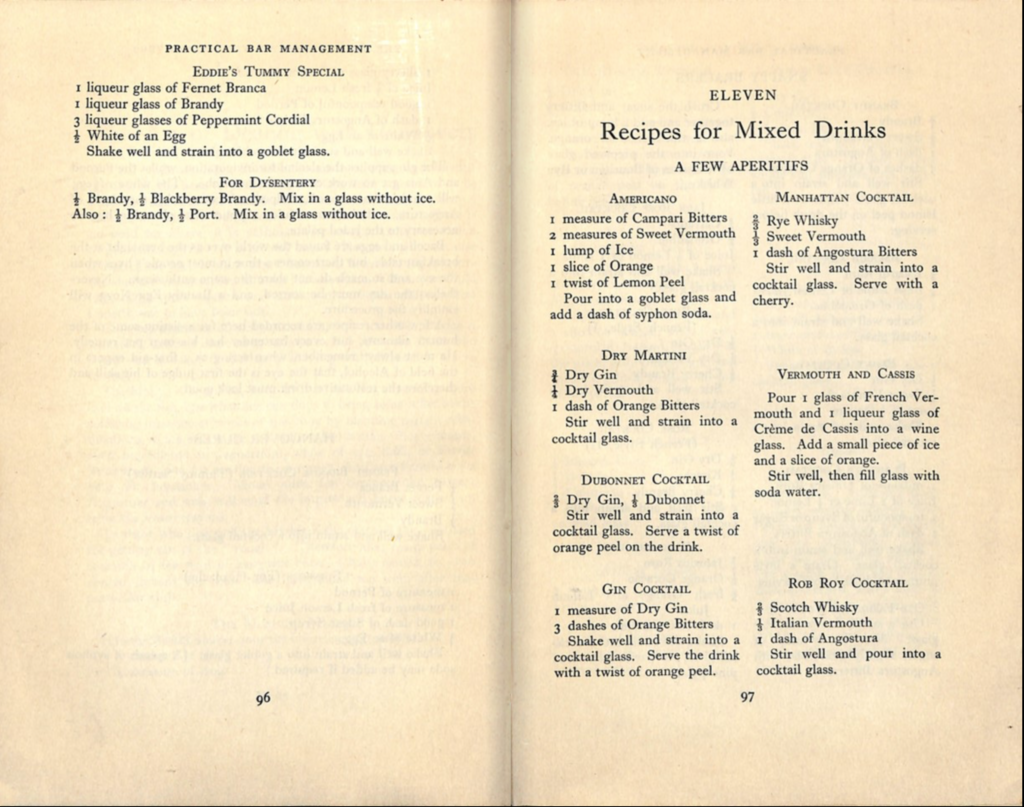
Check out Eddie's skills; wish I could have had a drink at his bar:
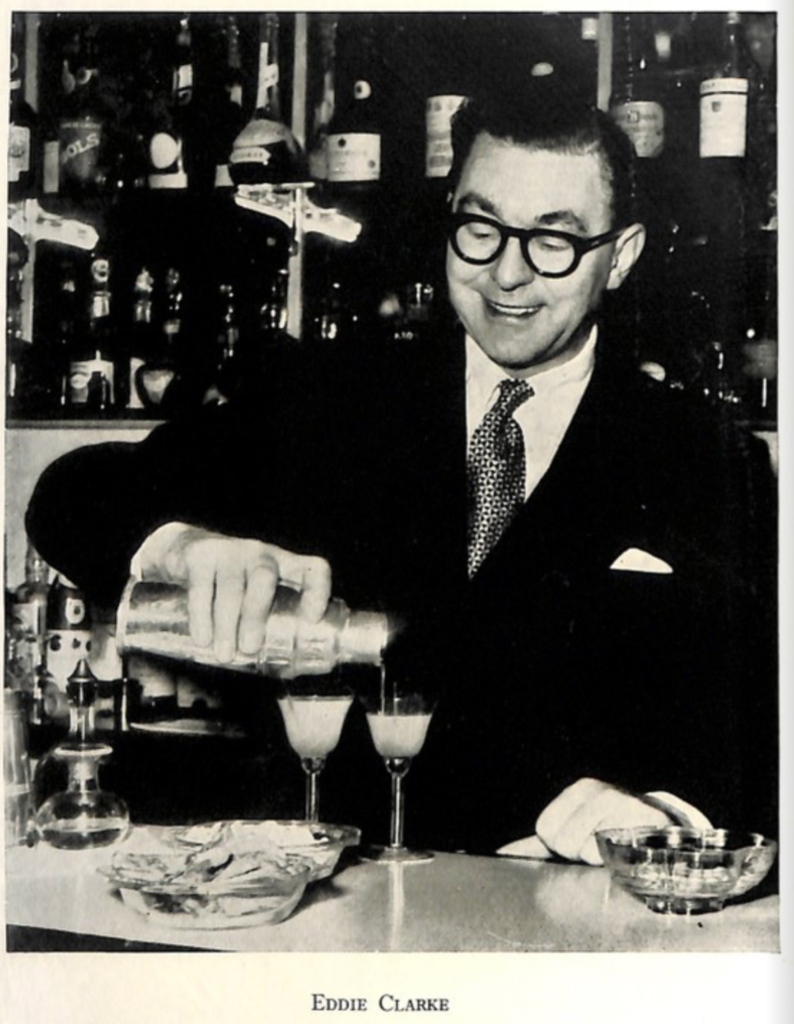
By 1967, the Manhattan hasn't changed and is enshrined in it's current form. But, there is now a throwback "old fashioned" Manhattan to be found in "Cocktails and Mixed Drinks" by Charles A Tuck. Harry Johnson would recognize this one.
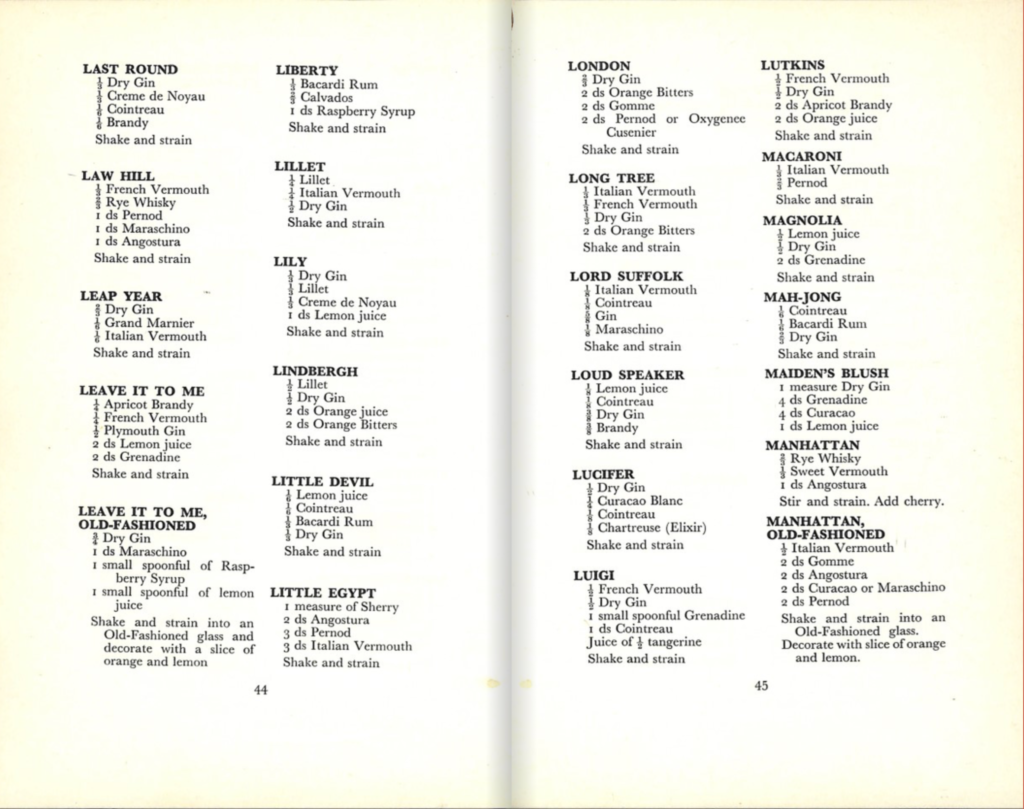
I personally go with the Manhattan recipe from the Death & Co Modern Classic Cocktails book - albeit in a rocks glass rather than in a coupe:
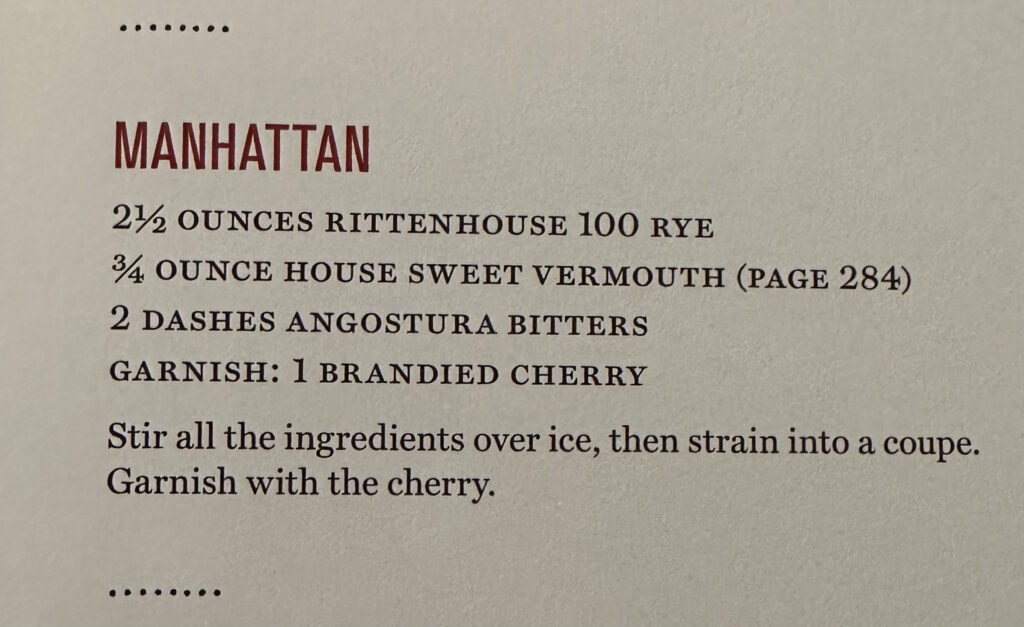
Here's the final result; now I need to go back in time and try the Harry Johnson version.
